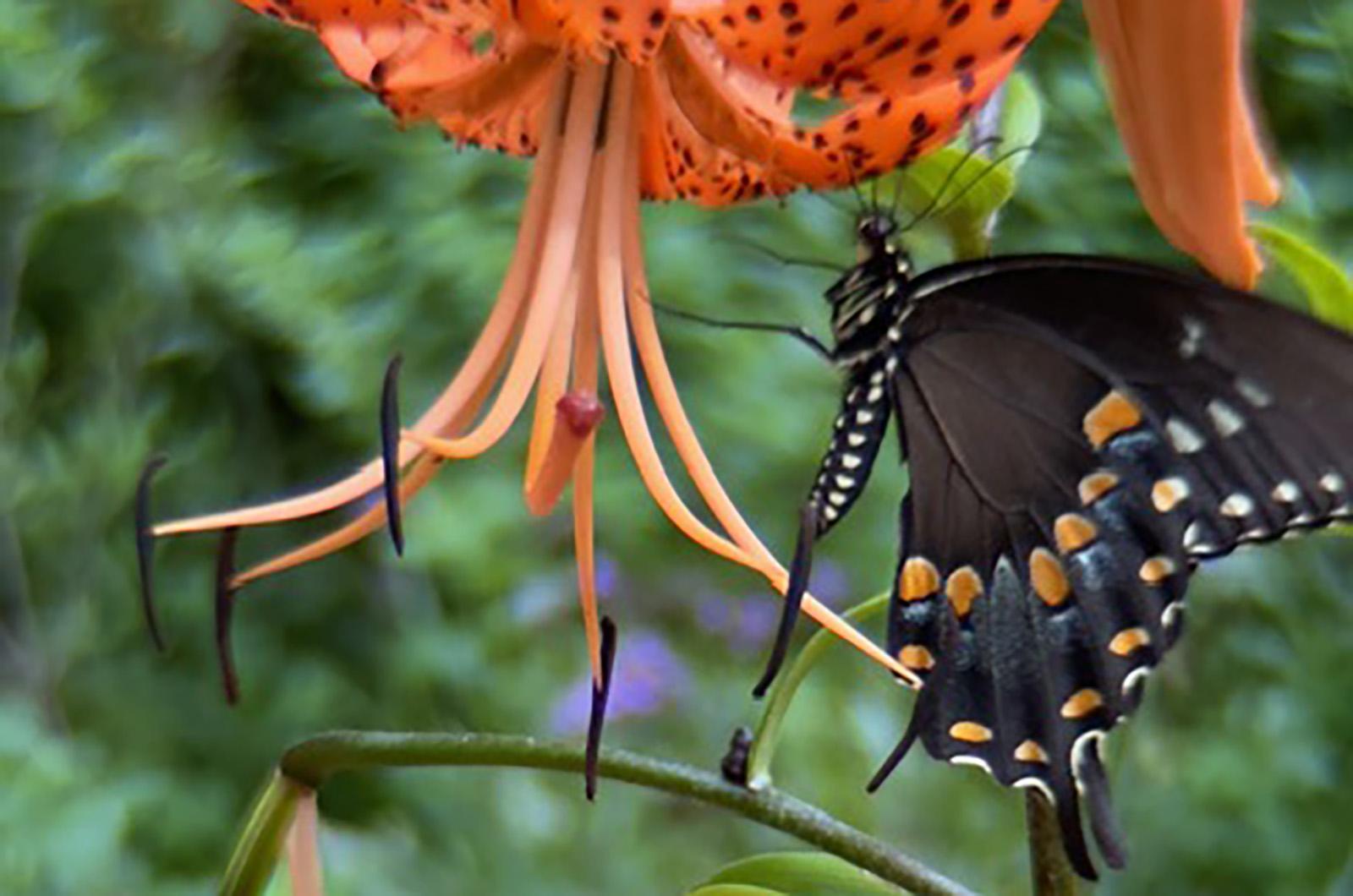It’s a good time to turn over a new leaf.
Spicebush swallowtail caterpillars literally do just that every day. You might be lucky enough to find a leaf folded along the mid-rib that holds these caterpillars if you search on spicebush or sassafras, their larval host plants.
To protect themselves, spicebush swallowtail caterpillars find their favored plant and exude silk on a single leaf that will dry, causing the leaf to close up around and shelter the caterpillar. There, it will rest during the day before coming out from this makeshift tent at night to feed. Keeping itself under wraps allows it the caterpillar to escape predators such as birds, dragonflies, spiders and other insects.
This is not its only fascinating folly. Spicebush swallowtails are masters of mimicry.
Start with the caterpillars that early on resemble bird droppings. This allows them to hide in plain site from predators. As it grows, the caterpillar’s appearance changes so it can imitate another creature. With two large eye spots and an organ called an osmeterium, the caterpillar pretends to be a snake. The osmeterium can be everted and looks like the forked tongue of a serpent.
In this eat or be eaten world, they say only the strong survive. I would suggest instead that it is the well-adapted that live another day.
Swallowtail caterpillars also exude a foul-smelling substance to dissuade potential predators and when ready to pupate, they will change color based on the season. Green chrysalises are employed during the summer when leaves are green and brown ones are used during the fall to match the dying leaves. This is called seasonal polymorphism and helps them blend into their surroundings.
There can be up to three generations of spicebush swallowtails per year. The egg-to-adult cycle takes approximately a month and then mature butterflies can live from two days to two weeks.
Adult swallowtails are a stunning and large butterfly that can be seen feeding on a variety of plants including Joe-Pye weed, sweet pepperbush, thistle, milkweeds, azaleas, mimosa trees, honeysuckle and jewelweed, among others. Find them also fluttering solo or in groups as they can practice puddling. Puddling is when a group of butterflies congregate on wet areas to drink and extract nutrients.
Swallowtail butterflies lay greenish white eggs one or two at a time on their larval host trees. The female can tell if they are on the right species of plant by drumming their forelegs on a leaf. They have chemoreceptors that can assess the chemical makeup of the leaf so they can assure that they have the right species for their offspring. This is an impressive method that is far superior to any app that we use for plant identification.
We can enjoy this flutterer through the fall, after which its last chrysalis will overwinter. With luck and good habitat, we will see the return of this species to spice things up again next spring.
Suzan Bellincampi is Islands director for Felix Neck Wildlife Sanctuary in Edgartown and the Nantucket Wildlife Sanctuaries. She is also the author of Martha’s Vineyard: A Field Guide to Island Nature and The Nature of Martha’s Vineyard.




Comments
Comment policy »